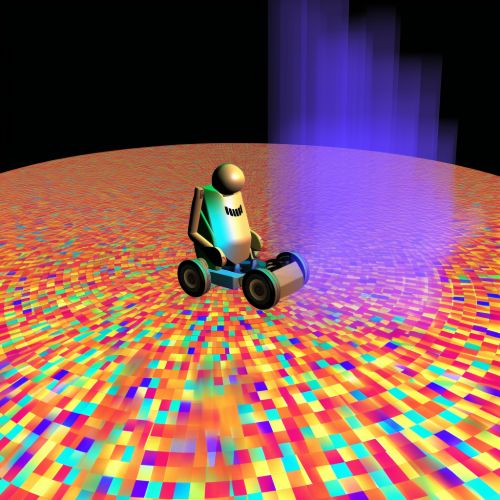Vector Field Histogram
Introduction
A Vector Field Histogram (VFH) is a mobile robot motion planning technique that was first introduced by Johann Borenstein and Yoram Koren in 1991. The VFH method uses a polar histogram as a statistical representation of the surrounding environment to guide the robot's movements. This technique is particularly useful in real-time navigation where the environment is unknown or dynamic.


Overview
The VFH method is based on the concept of a histogram which is a graphical representation of the distribution of data. In the context of mobile robot navigation, the data in question is the spatial distribution of obstacles in the robot's environment. The VFH method uses this histogram data to generate a steering direction for the robot.
Methodology
The VFH method consists of three main steps: primary polar histogram generation, binary polar histogram generation, and candidate direction selection.
Primary Polar Histogram Generation
In the first step, the robot uses its sensor data to create a primary polar histogram. This histogram represents the density of obstacles in the robot's environment as a function of direction. Each cell in the histogram corresponds to a sector of space, and the value of each cell is proportional to the measured obstacle density in that sector.
Binary Polar Histogram Generation
In the second step, the primary polar histogram is converted into a binary polar histogram. This is done by applying a threshold to the primary histogram. If the value of a cell in the primary histogram is above the threshold, the corresponding cell in the binary histogram is marked as occupied. Otherwise, it is marked as free. The binary histogram thus represents the robot's environment in a simplified form that is easier to process.
Candidate Direction Selection
In the third step, the robot uses the binary polar histogram to select a candidate direction for movement. This is done by identifying the largest gap in the histogram (i.e., the widest sector of free space) and choosing the direction that is closest to the robot's current heading and lies within this gap.
Advantages and Limitations
The VFH method has several advantages. First, it is computationally efficient, which makes it suitable for real-time navigation. Second, it is robust to sensor noise, which is a common problem in mobile robot navigation. Third, it can handle dynamic environments, as it constantly updates the histogram based on the latest sensor data.
However, the VFH method also has some limitations. For example, it assumes that the robot is circular and that it moves in a plane. These assumptions may not hold in all situations. Moreover, the VFH method does not take into account the robot's velocity or acceleration, which can lead to suboptimal navigation decisions.
Applications
The VFH method has been used in a variety of applications, including autonomous vehicles, robotic vacuum cleaners, and search and rescue robots. It is also used in research to develop new algorithms and techniques for mobile robot navigation.
